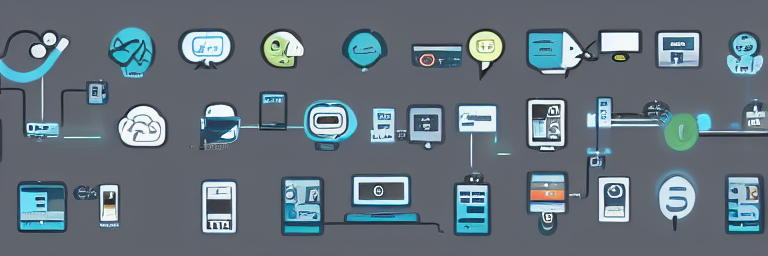What is Internet of Assets (IoA)?
The Internet of Assets (IoA) is a term that describes the physical world being connected to the digital world. It enables companies to track and manage physical assets, such as vehicles, equipment, and inventory, and to capture data from them in real–time. This data can then be used to improve asset performance, optimize business operations, and create new revenue streams.
How it Works
The Internet of Assets (IoA) is an emerging technology that is revolutionizing the way businesses manage and track their physical assets. The IoA enables the integration of physical assets into the digital world, making them easier to manage and control. Also, this technology is especially useful for industries such as manufacturing, logistics, and healthcare. Too, by utilizing the IoA, businesses can increase efficiency, reduce costs, and improve customer service.
The IoA works by utilizing a network of sensors, computers, and other devices that are connected to the internet. These devices detect and record data about physical assets, including their location, condition, and usage. Then, this data is transmitted over the internet to a centralized platform, where it is analyzed and used to inform decisions about asset management. For example, the data can be used to detect asset performance problems, identify potential maintenance needs, and provide insights for asset utilization planning.
Also, it provides businesses with improved asset visibility, allowing them to keep track of their physical assets in real–time. As well, this improved visibility can help businesses optimize processes, reduce downtime, and increase the efficiency of their operations. Moreover, the IoA can provide businesses with insights that can be used to improve customer service and enhance customer experiences.
The Internet of Assets is an exciting new technology that is revolutionizing the way businesses manage and track their physical assets. By utilizing the IoA, businesses can improve their efficiency, reduce costs, and improve customer service. As well, it is an essential technology for businesses that need to keep track of their physical assets in real–time.
The Benefits
The Internet of Assets (IoA) is an interconnected network of physical and digital assets that can be uniquely identified and tracked over time. Examples of IoA include:
- Connected Vehicles: Connected vehicles are vehicles that use wireless technologies to interact with other vehicles, other connected devices, and the environment. The data generated from these interactions is used to monitor and control various aspects of the car’s performance and to provide a range of services to the driver.
- Wearable Technology: Wearable technology is a form of IoA that includes smartwatches, fitness trackers, and other wearables that are connected to the internet. These devices are used to monitor and track various aspects of a user‘s health, fitness, and activities.
- Smart Homes: Smart homes are connected to the internet and can be monitored and controlled remotely. These homes use sensors, connected devices, and artificial intelligence to automate various tasks, from controlling the temperature to managing lighting and security.
- Smart Cities: Smart cities are cities that use the internet to connect various aspects of its infrastructure, from transportation to energy management. The data collected from these connections can be used to improve the efficiency and safety of the city.
- Industrial IoT: Industrial IoT (IIoT) is the application of IoA to industrial processes, such as manufacturing and logistics. IIoT is used to monitor and control various aspects of the production process, such as temperature, pressure, and other environmental conditions.
The Future of IoA
The future of the Internet of Assets (IoA) is a bright one. IoA is a technology that utilizes distributed ledger technology to securely and efficiently track and manage asset ownership, transfer, and use. It is an exciting new technology that has the potential to revolutionize the way we manage and interact with physical and digital assets.
In the future, IoA could be used to manage and track a wide variety of assets, from cars and houses to stocks and cryptocurrencies. Too, it could also be used to facilitate the secure transfer of assets between individuals and organizations. With IoA, it would be much easier to verify ownership of an asset and make sure that it is being used appropriately.
The potential applications for IoA are vast and could have a significant impact on our daily lives. For example, IoA could be used to create digital identities that would enable people to securely and safely prove their identity online and gain access to services and products. Also, it could be used to automate smart contracts, enabling the automatic execution of certain tasks and transactions based on predetermined rules and conditions.
The possibilities are truly endless, and the potential of the Internet of Assets is extremely exciting. As the technology develops and evolves, we can expect to see IoA being used in more and more areas, making our lives easier, more secure, and more efficient.

